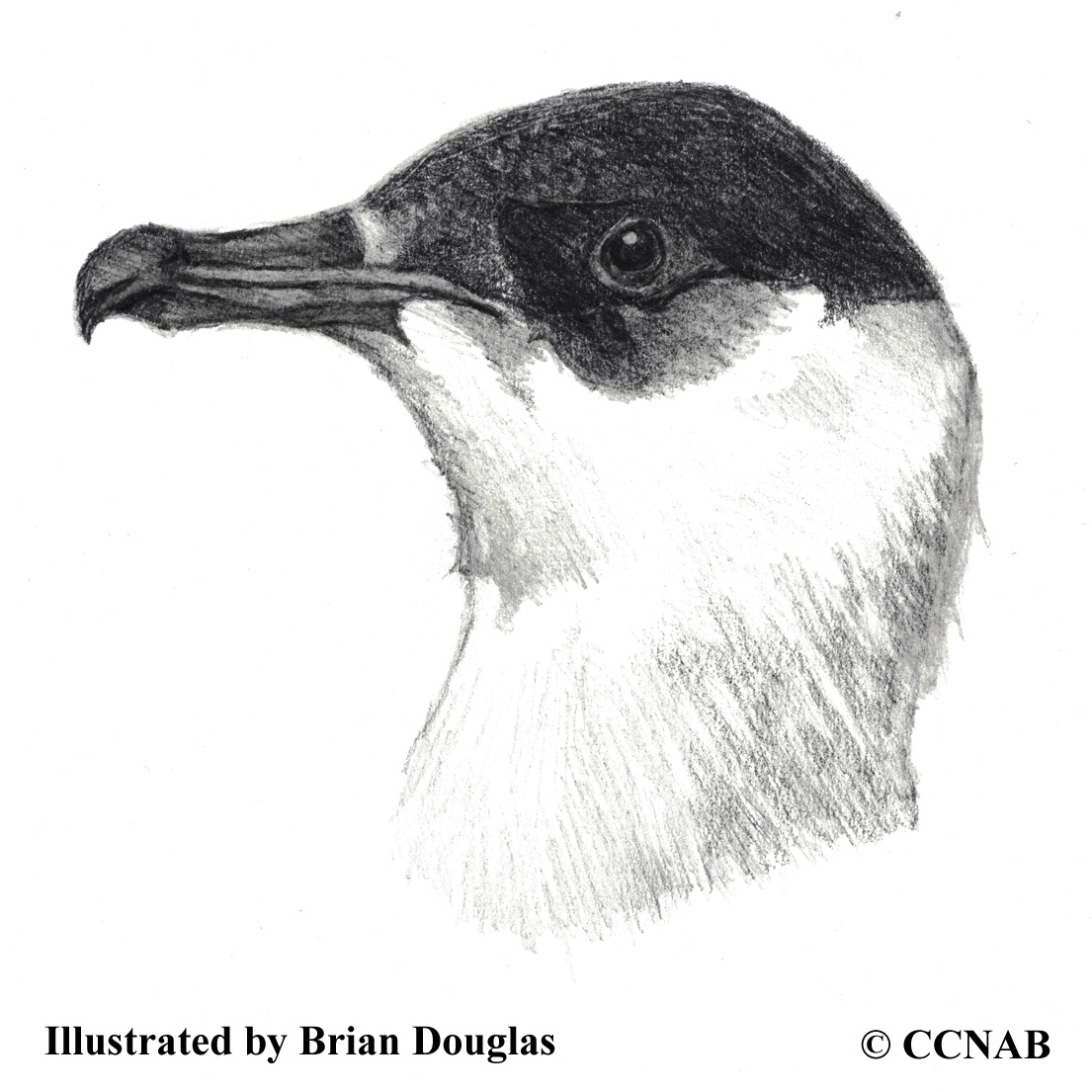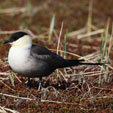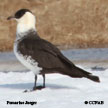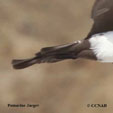Field Guide for all the Birds of North America
Jaegers
Labbe
Stercorariidae
Information, images and range maps on over 1,000 birds of North America, including sub-species, vagrants, introduced birds and possibilities
North American Bird Search Box
There are three types of jaegers found in North America. The Pomarine Jaeger is the largest among them and has the smallest northern breeding range. The Parasitic Jaeger is the second largest and has the largest breeding range throughout the Arctic. Lastly, the Long-tailed Jaeger is the smallest and easily identified among the three jaegers by its non-streaking flanks and its almost all white head, except for a small black cap.

The jaegers are predators and feed on mice and lemmings found in the tundra. One of their tactics is chasing and harassing gulls, terns, kittiwakes and other smaller birds to give up their food. These birds are easily recognized by their dark brown plumage and the large white area seen on their outer primaries. This being said, the Pomarine Jaeger and the Parasitic Jaeger have many similarities. Given a clear view, one can examine the size and build of the bird, its bill size and length. The Pomarine Jaeger is larger in size and has a heavier bill. The Parasitic Jaeger can be more easily recognized by its noticeably longer tail feathers when sitting on water.
Reference to Other Bird Site:
ABA - American Birding Association This site represents an organization that maintains official records of all birds species that have been proven to have been seen inside the perimeters of the North American Continent and the surrounding bodies of water. Regular revised versions are posted to keep the bird list current at all times. This is the list used by all serious birders over their lifetime. You may be aware of the movie called the "Big Year". It was with this list that all the competing birders used in an attempt to set a new record as to how many bird species that could be seen by an individual birder in one calendar year.




